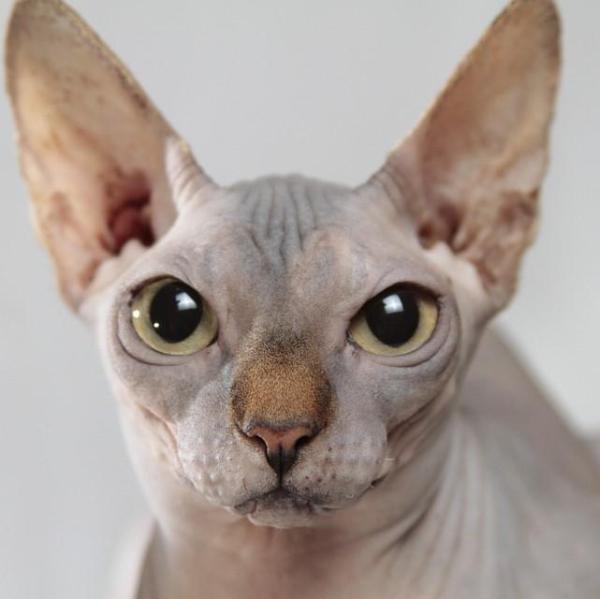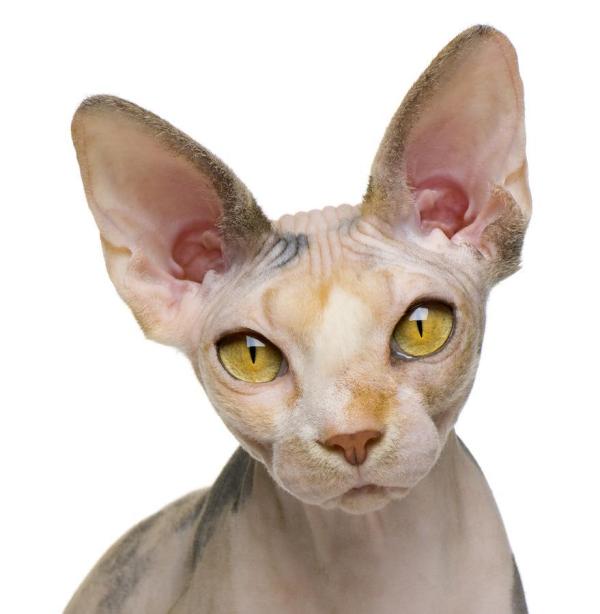Caring for a Sphynx Cat



See files for Cats
If you are thinking of adopting a Sphynx cat, you must take into account some details about their diet and skincare to prevent possible health problems. While the Sphynx cat's baldness is their most popular trait - it's caused by a recessive gene - they do have some hair.
In this AnimalWised article we'll discuss what you need to know about caring for a Sphynx cat, including its particular and specific care to keep this Canadian breed in optimal health.
What is the best diet for a Sphynx cat?
The Sphynx cat requires a different diet from the rest of cat breeds. These cats are covered by such short thin hair that it's almost undetectable to the eye and touch: lacking a thick coat of fur, their thermoregulation is more complex, as they have to compensate.
This difference in metabolism causes the Sphynx to consume more food than any other cat of the same size. When caring for a Sphynx cat, it is imperative to feed it a special diet. Look for specific foods in your local pet stores: they should fit the nutritional demands of the breed, which requires more protein and fat in its diet than breeds with fur. While the diet for a normal cat should include 30% protein and 20% fat, the Sphynx needs at least 35% protein and 25% fat.

Caring for a Sphynx cat's hygiene
Sphynx cats sweat and accumulate on their skin a layer of protective fat with an oily texture. This causes them to get dirtier than cats with fur. In addition, they cannot preen themselves properly, so are dependent on their caregiver for proper hygiene. When dirty, Sphynx cats easily become uncomfortable and even depressed.
Bathing a Sphynx cat:
Although a biweekly or monthly bath is generally recommended, not all Sphynx cats get dirty as quickly. For that reason, you should be aware of the texture of your cat's skin and learn to notice the accumulation of dirt, which can also result in a reddish tone in its dermis. Remember that the small folds in a Sphynx cat's skin tend to accumulate dirt and micro-organisms, causing the appearance of scabies, among other diseases.
To bathe your Sphynx cat, use specific products for this breed. Excess bathing or using unsuitable products may cause greasy skin and even severe irritation of its delicate dermis. If you can't find specific products for Sphynx cats, use shampoo for cats with sensitive skin and cat wipes.
Caring for a Sphynx cat's eyes:
Sphynx cats lack eyelashes, so eye care should be more rigorous than what is usual in other breeds. They are more prone to eye infections, and therefore constant hygiene is paramount. Saturate a sterile gauze with saline solution, which can be purchased in drug stores or some supermarkets, and carefully wash the cat's eye. Use a different gauze for each eye.
Caring for a Sphynx cat's ears:
You must also maintain a comprehensive hygiene routine for the Sphynx cat's ears, which have a tendency to accumulate mites, grease and wax if not cleaned with appropriate frequency. Use a sterile gauze to clean your cat's ears. Wrap the gauze around your finger and move it carefully inside the pinna to remove this build up.
Caring for a Sphynx cat's claws:
Finally, it is very important to regularly trim your cat's claws and remove accumulated dirt. Regular use of the scratching post will help you have to trim them less frequently, besides being an enriching and positive activity for the cat.

Keeping a Sphynx cat warm
A Sphinx cat is a strictly indoors cat, as exposure to outside elements can easily make it very sick.
Household temperature:
Throughout the year, the temperature of your house should be placed at around 20 to 25 °C (68 to 77 ºF). A lower temperature may cause colds, flu and malaise in your delicate cat.
Caring for a Sphynx cat in the winter:
Despite your attempts to preserve the warmth of your home, it may be that temperatures drop too much. In that case, you should use clothes for cats and offer your pet a bed or fluffy nest with blankets so that it can take refuge when needed. You can also heat their wet food cans or homemade recipes. Here you can find more tips to help cats deal with the cold.
Caring for a Sphynx cat in the summer:
Exposure to sunlight may cause sunstroke and even severe burns. For that reason it is highly recommended to monitor your cat's exposure during the warmer summer periods and pay special attention to the dermis and behavior to detect any problems early on.

Common diseases of Sphynx cats
It is important to see a vet every 6 or 12 months to detect any diseases early on and check your cat's overall health. In addition, the vet will help you correctly continue the vaccination and deworming schedule. The most common diseases or health problems of Sphynx cats include:
- Bad smell: It is usually caused by poor hygiene. Remember to bathe your cat at least once a month to balance out the overproduction of oil and sweat and clean its eyes, ears and genitals.
- Scabies: It is one of the most common skin problems in Sphynx cats, and it is directly related to poor hygiene. It can also result from infection by contact with infected animals and humans.
- Allergies: Sphynx cats, like all breeds, can suffer dietary or environmental allergies. These are usually detected through eruptions in the dermis.
- Feline immunodeficiency: Also known as feline AIDS, this disease is very contagious among individuals of the same species and its consequences are serious, since the animal loses defenses from its immune system and is susceptible to getting sick on a regular basis. It is transmitted by bites from infected cats and through sex.
- Feline coronavirus: It is a virus that mutates easily and can cause very different symptoms in your Sphynx cat, including weakness, vomiting or diarrhea. There is no specific treatment, but its symptoms can be alleviated.
- Feline infectious peritonitis: It is usually caused by feline coronavirus, and it is an inflammation of the blood vessels.
- Hypertrophic cardiomyopathy: It is a very common disease in cats and its origin is genetic. It usually occurs in breeding lines in which members of the same family are used to reproduce.
Following our advice, paying attention to possible diseases and going to the vet whenever necessary, your Sphynx cat can live between 14 and 20 years.

If you want to read similar articles to Caring for a Sphynx Cat, we recommend you visit our Basic care category.
Tips
- Remember to keep a regular hygiene of the Sphynx cat utensils.









